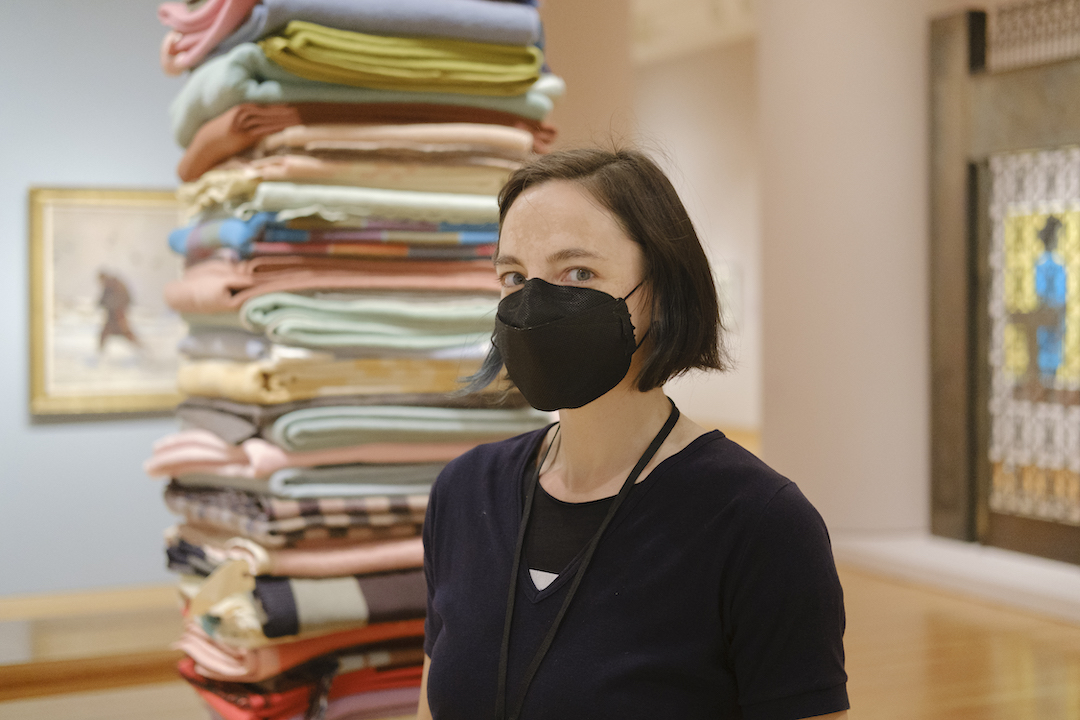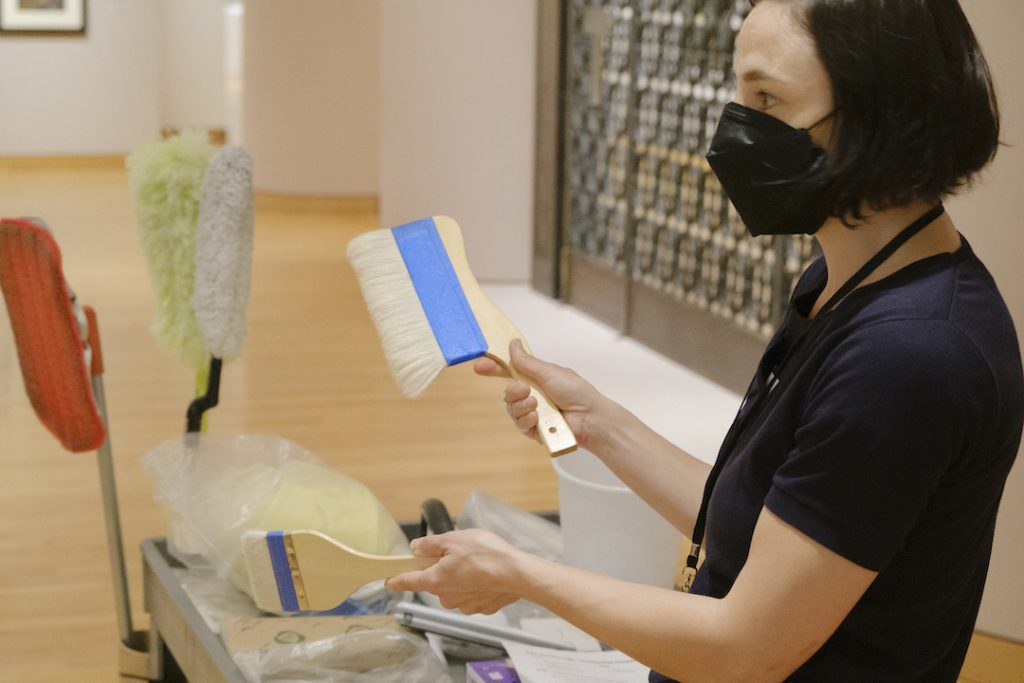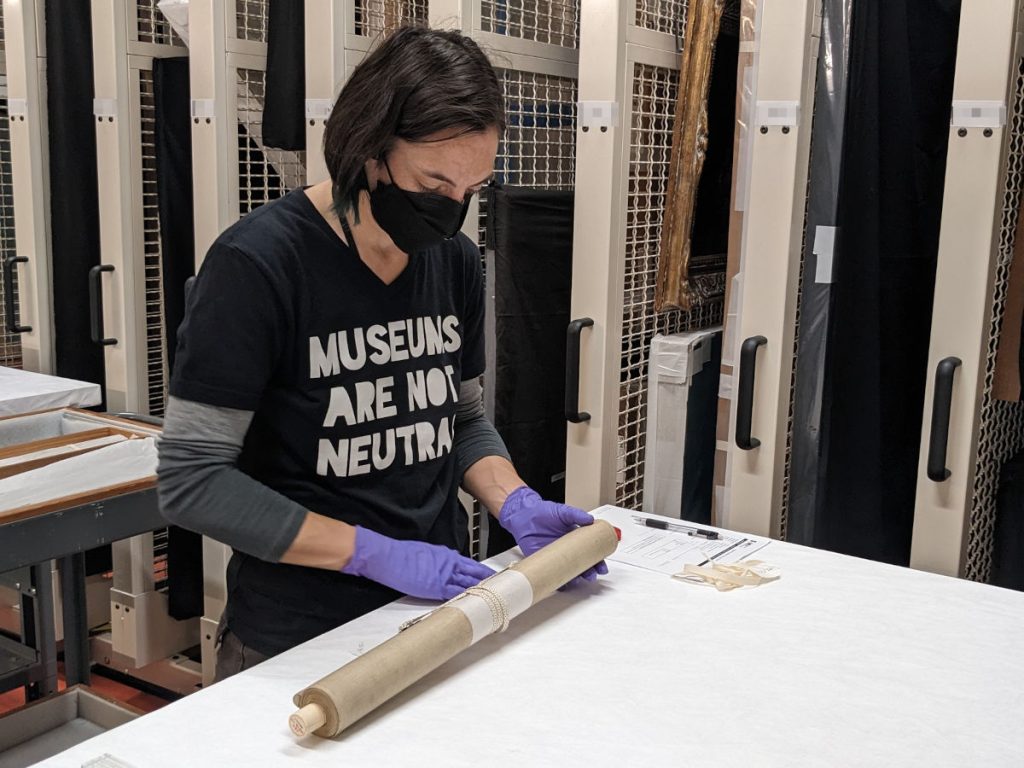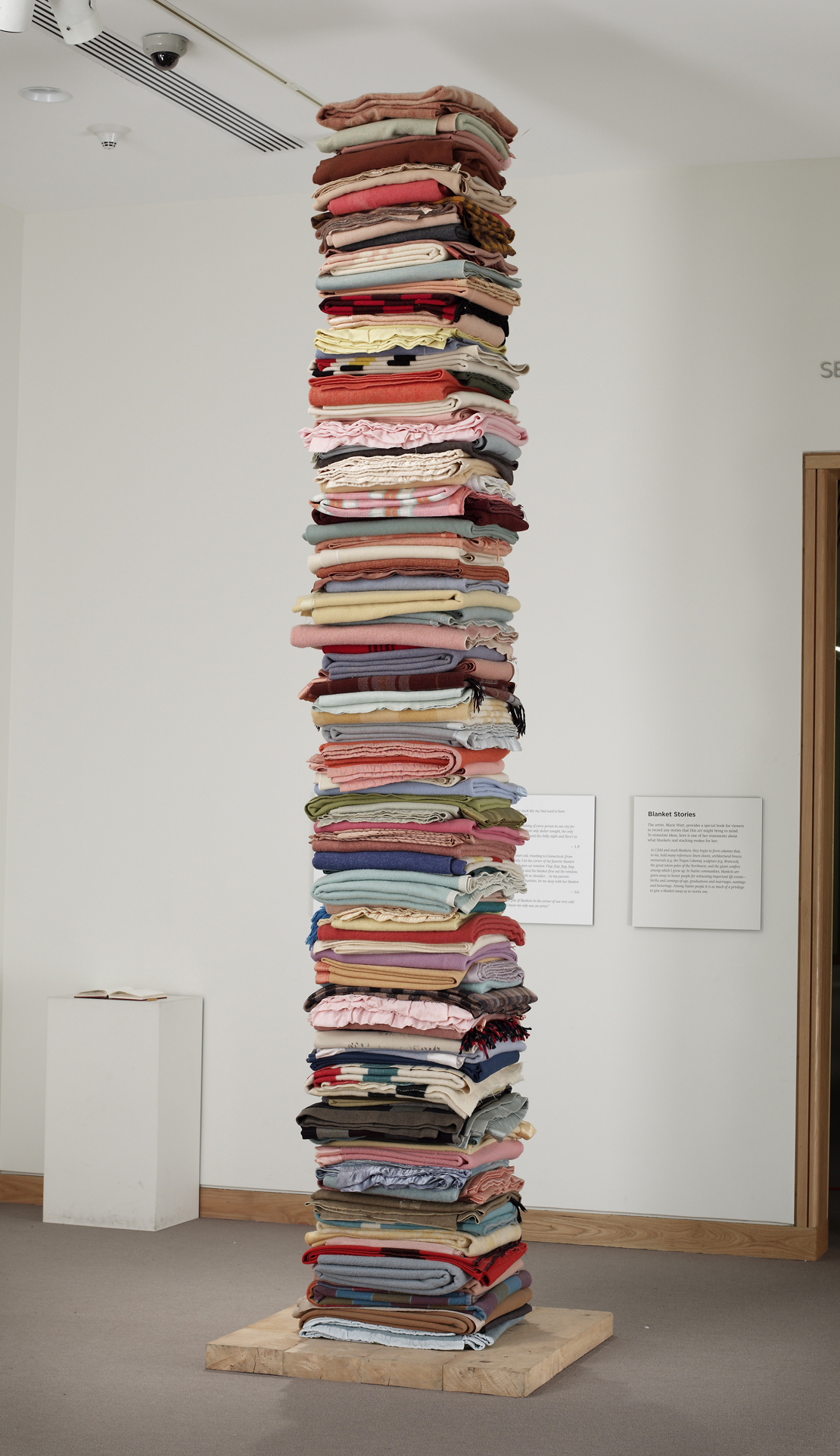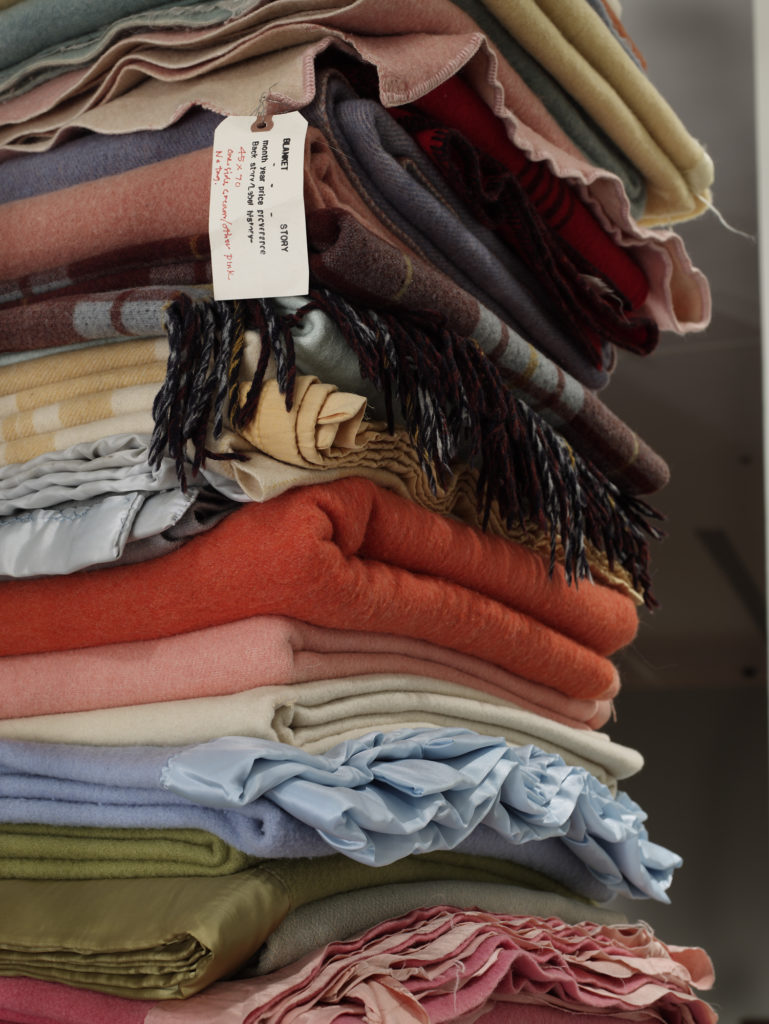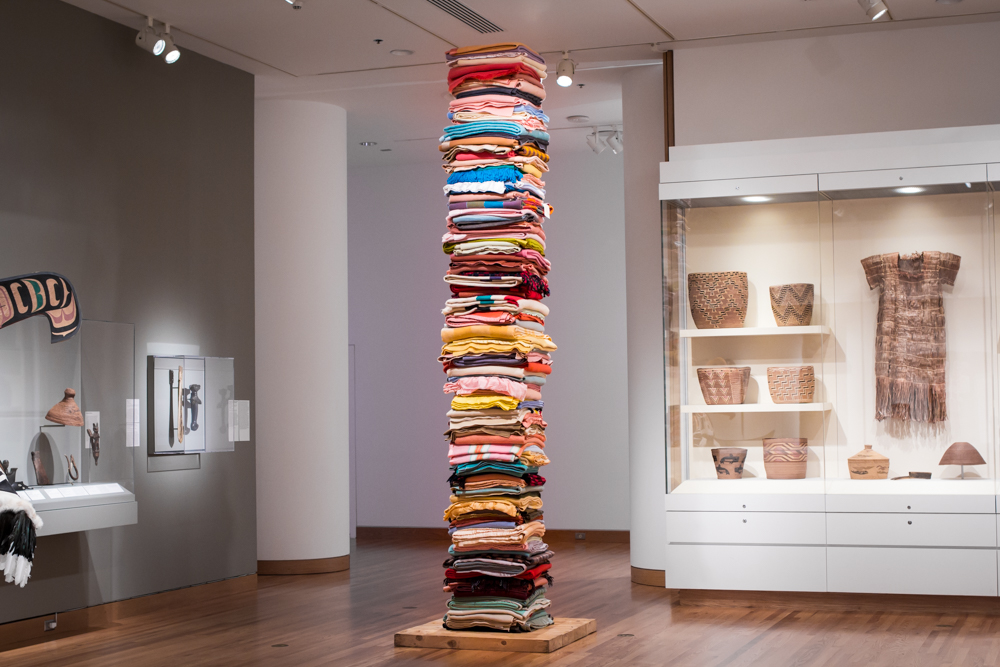The Importance of Preventative Care: Emerging Arts Leader Jennifer Beetem Reflects
Over the decade between my very first lab tour at the Seattle Art Museum and my SAM Emerging Arts Leader Internship in Conservation, I learned that the scope within which conservators work is much larger than the lab. My earlier internships took place in private practice home studios, on-site projects, and archaeological fieldwork. During my EAL internship, I did numerous preventive conservation projects in collections spaces, shared workspaces, and the galleries. As SAM’s first IAIA Collections Care Intern, I am excited to share about the IAIA and the projects I’ve worked on!
The Institute of American Indian Arts (IAIA) is an intertribal college in Santa Fe, New Mexico. As a non-Native conservator whose work intersects with collected Indigenous objects, I enrolled in its museum studies online certificate program to study museum history and contemporary practices. Over the past two years, I participated in class discussions and learned from stellar professors on the best practices in navigating collections and curatorial work. This last semester I successfully hustled for an in-person internship for credit with SAM Senior Collections Care Manager Marta Pinto-Llorca.
Preventive conservation is like preventive medicine: appropriate and timely care intended to slow deterioration. This includes monitoring objects’ condition, using safe storage and display materials, managing indoor climates, emergency planning, surface cleaning, and pest management. Preventive care review included shadowing SAM Collections Care Associate Vaughn Meekins on his weekly gallery cleaning rounds.
Here is a glimpse of the preventive care that was completed for Marie Watt’s sculpture Blanket Stories: Three Sisters, Four Pelts, Sky Woman, Cousin Rose, and All My Relations. Before installation in American Art: The Stories We Carry, conservation workers treated the wool blankets to prevent introducing invisible pest activity into the gallery. Vaughn Meekins, SAM Collections Technician Ignacio Lopez, and I spent many hours non-contact vacuuming both sides of each blanket, refolding, then sealing batches in plastic to freeze for a week.
On my days at the Seattle Asian Art Museum in Volunteer Park, I supported periodic gallery rotations of scroll paintings and textiles. Marta trained me to handle boxed scrolls and to safely unbox, unroll, roll, and box Japanese hanging scrolls. SAM Senior East Asian Paintings Conservator Tanya Uyeda taught me specific terms related to Japanese scroll paintings which added to my vocabulary for condition reporting paper and textiles.
Over many downtown work sessions, I condition mapped William Cordova’s massive mixed-media assemblage Untitled (Cosmos). Cordova intentionally applied dust, unstable collage adhesives, and non-archival tape in his artwork, so it was important to create a detailed condition map before going on view later this year. To mitigate risks during installation and display, I gently tested delaminating collage papers with an air puffer and collected runaway pieces in labeled bags.
Working with invisible disabilities is tough and I’m grateful to my community for sharing collective ambition to build a culture of caregiving: for people and for art. Thank you to SAM for giving me the space to cook up my first public education session! For my EAL intern gallery talk, I introduced the subject of preventive conservation to colleagues and visitors alike, and pantomimed how to dust frames, objects, and casework. I loved fielding questions and teaching skills people can use to care for art in their own homes!
– Jennifer Beetem, SAM Emerging Arts Leader Intern in Conservation
Photos: Alborz Kamalizad & Marta Pinto-Llorca.
